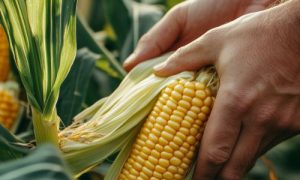Malawi’s Maize Imports: A Strain on Foreign Exchange

Malawi faces a severe foreign exchange crisis, limiting its ability to import maize after a poor 2024 harvest. Imports from Zambia and Tanzania are essential but strain reserves. Experts urge boosting local production via early procurement, irrigation, and storage to reduce future reliance on imports and protect economic stability.
Malawi is facing a deepening foreign exchange crisis, which is complicating the government’s efforts to secure essential food supplies — particularly maize, the country’s staple grain.
Following a poor 2024 harvest caused by prolonged dry spells across several districts, local maize production has fallen far below national demand. To avert hunger, the government has turned to imports from Zambia and Tanzania.
While these imports are critical to ensuring food availability, they have also placed additional pressure on Malawi’s already limited foreign exchange reserves — a situation that underscores the urgent need to boost local agricultural productivity and build resilient food systems.
The World Bank’s May 2025 Malawi Economic Monitor Report revealed that the country’s foreign exchange reserves are only sufficient to cover about two months of imports, below the recommended minimum of three months. The same report warns that Malawi’s trade deficit continues to widen, as imports outpace exports.
Similarly, the Bridgepath Capital Economic Report (March 2025) projected Malawi’s trade deficit to reach US$2.3 billion this year, with the kwacha continuing to depreciate against major currencies, further inflating the cost of imports.
The Reserve Bank of Malawi has since warned that limited foreign exchange remains one of the biggest threats to economic stability, stressing that unplanned food imports exacerbate currency pressures.
In 2025, the Agricultural Development and Marketing Corporation (ADMARC) announced plans to import 200,000 metric tonnes of maize from Zambia and Tanzania to stabilize prices and prevent food shortages. However, ADMARC managed to purchase only 13,000 tonnes locally — well below the targeted 20,000 tonnes — due to limited supply and high farmgate prices.
This shortfall means that most of the maize for national reserves must be imported, requiring significant amounts of foreign currency to pay suppliers. In August 2025, the World Food Programme (WFP) confirmed that it is collaborating with the Government of Malawi and the World Bank to import 48,000 tonnes of maize for drought-affected households, at a total cost of US$35 million. A portion of this financing is being supported by donors to ease pressure on the kwacha.
Experts note that while maize imports consume scarce foreign exchange, they are sometimes unavoidable when harvests fail. “It’s a difficult balancing act,” one economist observed. “The government must protect its reserves while also making sure Malawians don’t go hungry.”
Both the World Bank and the International Monetary Fund (IMF) have advised Malawi to strengthen local food production systems. They recommend that the government buy maize early from local farmers, improve grain storage facilities, and expand irrigation farming to mitigate the impact of droughts and reduce future dependence on imports.
Economists further warn that excessive reliance on imported maize weakens the kwacha, fuels inflation, and undermines long-term economic growth. They suggest that Malawi prioritize purchasing from local farmers using kwacha and resort to imports only when absolutely necessary.
In the end, the evidence is clear: importing maize drains Malawi’s foreign exchange, but when local supply falls short, it becomes a matter of survival. The long-term challenge is to strike a balance between meeting urgent food needs and safeguarding economic stability.
With strategic investments in irrigation, storage, and farmer support, Malawi can gradually reduce dependence on imported maize, preserve foreign reserves, and strengthen its ability to feed itself sustainably.
To Read more about Maize News continue reading Agriinsite.com
Source : Nyasa Times

















